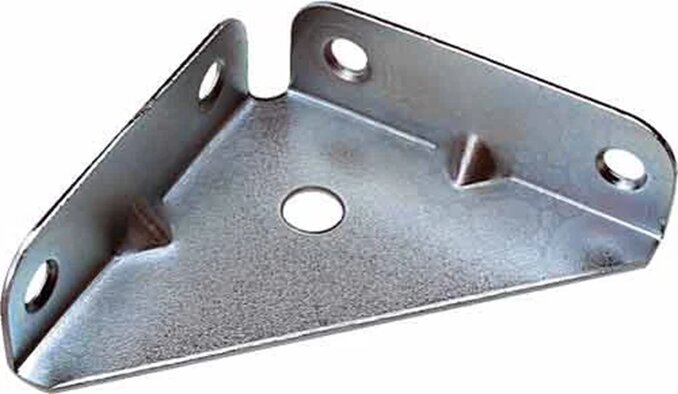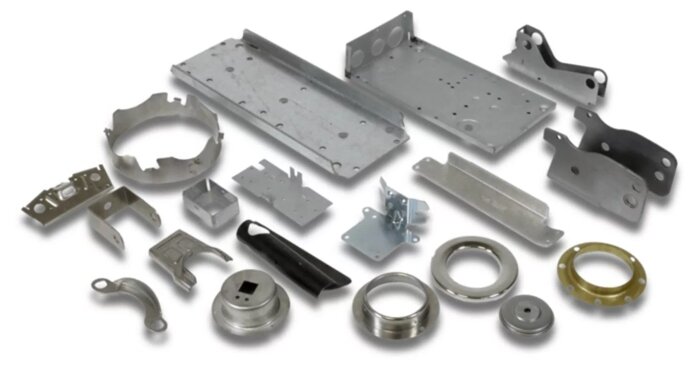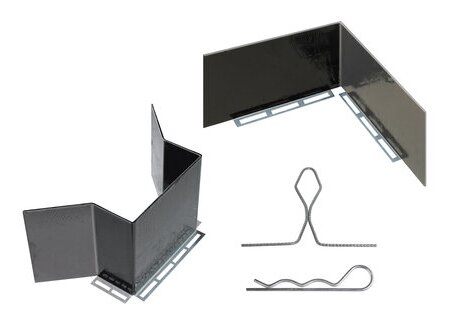قد يكون العمل مع الأكريليك محبطاً. غالبًا ما يؤدي القطع اليدوي إلى حواف خشنة وشقوق ومواد مهدرة. هذه المشاكل تبطئ الإنتاج وتؤثر على الجودة النهائية لمنتجاتك. يوفر القطع بالليزر حلاً دقيقاً وفعالاً يقضي على هذه المشاكل الشائعة مع فتح إمكانيات تصميم جديدة.
يُحدث القطع بالليزر ثورة في تصنيع الأكريليك من خلال أشعة الضوء المركزة التي تعمل على إذابة وتبخير المواد بدقة متناهية. وتحقق هذه التقنية حوافاً نظيفة وأنماطاً معقدة وقطعاً مفصّلة يستحيل قطعها بالطرق التقليدية. يمكن لأنظمة الليزر الحديثة التعامل مع مختلف سماكات وأنواع الأكريليك مع الحفاظ على دقة استثنائية.
إذا كنت تفكر في القطع بالليزر لمشروعاتك المصنوعة من الأكريليك، فستحتاج إلى معرفة كيف يمكن لهذه التقنية أن تفيد تطبيقاتك الخاصة. دعنا نستكشف الجوانب التقنية والفوائد العملية والاستخدامات الواقعية للأكريليك المقطوع بالليزر.
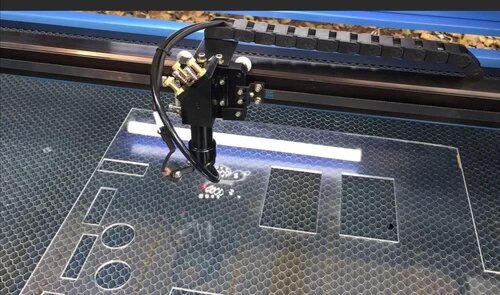
فهم قطع الأكريليك بالليزر بالليزر
الأكريليك مادة متعددة الاستخدامات أصبحت مادة أساسية في العديد من الصناعات. دعونا نستكشف أنواعه والخصائص التي تجعله مثاليًا للقطع بالليزر.
ما هو الأكريليك؟
الأكريليك، أو البولي ميثيل ميثاكريلات (PMMA)، هو بوليمر صناعي. وغالباً ما يُستخدم كبديل خفيف الوزن ومقاوم للكسر للزجاج.
يتميز الأكريليك بوضوح بصري ممتاز. فهو ينقل ما يصل إلى 92% من الضوء المرئي، مما يجعله أكثر شفافية من الزجاج.
معروف بمتانته. يبلغ وزن الأكريليك نصف وزن الزجاج تقريباً ولكنه أكثر مقاومة للصدمات.
أنواع ألواح الأكريليك
يتم تصنيع الأكريليك المصبوب عن طريق صب الأكريليك السائل في قوالب. تنتج هذه العملية صفيحة ذات جودة أعلى مع وضوح بصري أفضل ومقاومة أفضل للمواد الكيميائية.
يُصنع الأكريليك المبثوق عن طريق إجبار الأكريليك المصهور على المرور عبر قالب. وهو أقل تكلفة في الإنتاج ولكنه قد يحتوي على عيوب طفيفة.
تختلف الألوان والتشطيبات بشكل كبير. يتوفر الأكريليك بخيارات شفافة وشفافة وغير شفافة، بالإضافة إلى اللمسات النهائية العاكسة والمعتمة.
توجد أنواع أكريليك متخصصة لتطبيقات محددة. وتشمل هذه الأنواع أنواعاً مقاومة للأشعة فوق البنفسجية للاستخدام الخارجي وأنواعاً مقاومة للتآكل في حالات التآكل الشديد.
خواص الأكريليك ذات الصلة بالقطع بالليزر
تُعد نقطة الانصهار ضرورية للقطع بالليزر. يذوب الأكريليك عند حوالي 160 درجة مئوية (320 درجة فهرنهايت)، مما يسمح بقطع نظيف مع الحد الأدنى من المناطق المتأثرة بالحرارة.
يتميز الأكريليك بتوصيل حراري منخفض. وهذا يعني أن الحرارة لا تنتشر بعيدًا عن خط القطع، مما يتيح عملًا دقيقًا ومفصلاً.
الوضوح البصري مهم للعديد من المشروعات. لا يؤثر القطع بالليزر على شفافية الأكريليك الشفاف، مما يحافظ على جاذبيته البصرية.
يعتبر صقل الحواف من الاعتبارات الحاسمة. عادةً ما ينتج عن القطع بالليزر حافة مصقولة وناعمة على الأكريليك دون الحاجة إلى التشطيب.
يؤثر تفاوت السماكة على معلمات القطع. تتميز معظم ألواح الأكريليك بتفاوتات سُمك ضيقة، مما يسمح بنتائج قطع بالليزر متسقة.
العلم وراء قطع الأكريليك بالليزر بالليزر
كيفية عمل القطع بالليزر
تبدأ العملية بحزمة ضوئية مركّزة من الضوء، مركّزة على درجات حرارة تتجاوز 1500 درجة فهرنهايت. هذه الحرارة الشديدة لا تحرق الأكريليك، بل تبخّره. يتحرك الشعاع بدقة موجهة بالكمبيوتر، متبعاً مسار تصميمك نقطة بنقطة، مما يؤدي إلى إحداث قطع رقيقة تصل إلى 0.1 مم.
أنواع الليزر المستخدمة لقطع الأكريليك
ليزر ثاني أكسيد الكربون
يسيطر ليزر ثاني أكسيد الكربون على عالم قطع الأكريليك. يتوافق طول موجتها البالغ 10.6 ميكرون بشكل مثالي مع خصائص امتصاص الأكريليك. تقوم هذه الماكينات بقطع المواد التي يصل سمكها إلى 1 بوصة بشكل نظيف. تترك الحزمة المركزة حوافًا مصقولة وناعمة تحتاج إلى الحد الأدنى من التشطيب.
ليزر الألياف
تلعب ليزر الألياف دورًا مختلفًا. ففي حين أنها ممتازة للمعادن، إلا أنها غالباً ما تعاني مع الأكريليك. فقد يتسبب طولها الموجي الأقصر في ذوبان مفرط وحواف خشنة. يلتزم معظم المحترفين بأنظمة ثاني أكسيد الكربون لأعمال الأكريليك.
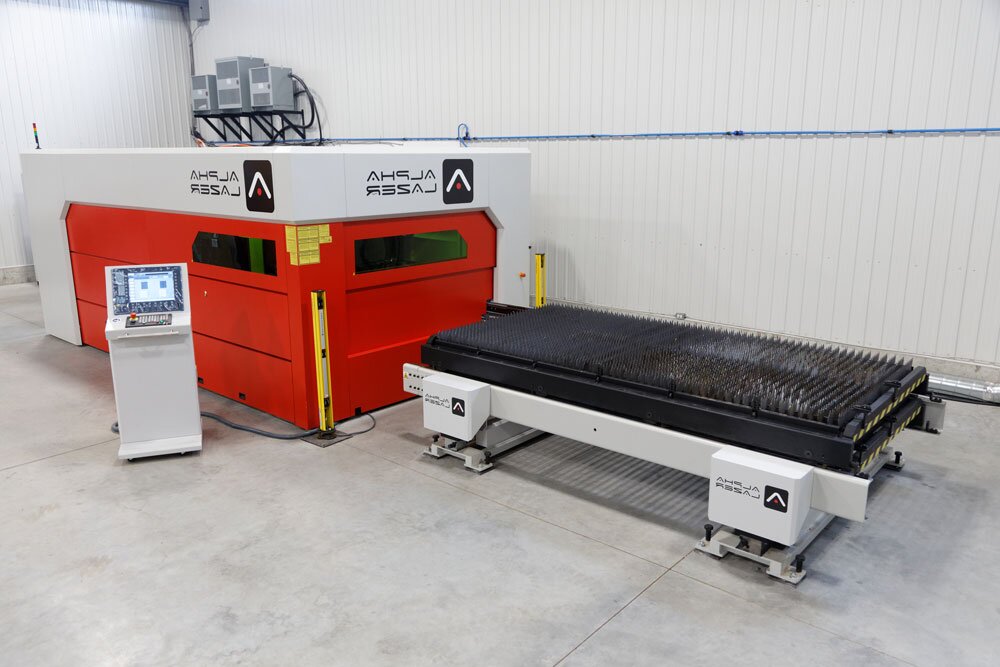
مزايا قطع الأكريليك بالليزر بالليزر
تقدم تقنية القطع بالليزر مجموعة من الفوائد التي لا يمكن أن تضاهيها الطرق التقليدية. دعونا نستكشف الفوائد الرئيسية للقطع بالليزر في تصنيع الأكريليك.
الانضباط و الدقة
- يحقق القطع بالليزر تفاوتات ضيقة تصل إلى 0.1 مم
- يعيد إنتاج التصاميم بدقة كما هي
- مثالية للأنماط المعقدة والأشكال المعقدة
- تتفوق على طرق القطع التقليدية في الدقة
حواف نظيفة وأقل قدر ممكن من النفايات
- شعاع الليزر المركز يذيب المواد ويبخرها بشكل نظيف
- ينتج عنه حواف ناعمة ومصقولة
- غالبًا ما يُغني عن الحاجة إلى مزيد من التشطيبات
- تقليل وقت ما بعد المعالجة وتكاليف العمالة
- يقلل من هدر المواد بسبب القطع الدقيق
براعة في التصميم
- تسمح العملية التي يتم التحكم فيها بالكمبيوتر بمجموعة واسعة من التصميمات
- التعامل بسهولة مع الأشكال الهندسية البسيطة إلى الأنماط المعقدة
- يسهل التخصيص والتعديل السريع للتصميم والتعديلات
- لا حاجة إلى أدوات أو قوالب جديدة لتغييرات التصميم
- مفيد بشكل خاص للنماذج الأولية وعمليات الإنتاج الصغيرة
الفعالية من حيث التكلفة
- كفاءة عالية في عملية القطع
- الحد الأدنى من وقت الإعداد المطلوب
- يقلل من نفايات المواد بشكل كبير
- غالبًا ما يتم التخلص من خطوات التشطيب الإضافية
- يوفر وفورات كبيرة في التكاليف للتصميمات المعقدة
- اقتصادية للمشاريع التي تتطلب تكرارات متعددة
تطبيقات الأكريليك المقطوع بالليزر
إن تعدد استخدامات الأكريليك المقطوع بالليزر يفتح لك العديد من الإمكانيات في مختلف الصناعات والمجالات الإبداعية. دعنا نستكشف بعض الاستخدامات الأكثر شيوعاً وابتكاراً للأكريليك المقطوع بالليزر:
اللافتات والعروض
- لافتات وشعارات متاجر البيع بالتجزئة
- لوحات الأسماء التجارية واللافتات المكتبية
- شاشات العرض التجاري واللافتات
- لوحات قوائم الطعام للمطاعم
- لافتات إعلامية للأماكن العامة
- لافتات مضيئة مع شاشة LED
العناصر المعمارية
- فواصل وحواجز زخرفية للغرف والفواصل الزخرفية
- تركيبات الإضاءة وأباجورات الإضاءة المخصصة
- معالجات نوافذ فريدة من نوعها
- مكونات الأثاث الحديث
- البطانات الخلفية للمطابخ والحمامات
- درابزينات سلالم أنيقة
هدايا وجوائز مخصصة
- إطارات صور شخصية
- الجوائز والدروع المنقوشة
- الجوائز التقديرية للشركات
- زينة الزفاف والمناسبات
- سلاسل المفاتيح والحلي المخصصة
- قطع مجوهرات فريدة من نوعها
الاستخدامات الصناعية
- لوحات التحكم في الماكينات
- واقيات واقية للمعدات
- لافتات صناعية متينة
- لوحات العدادات المخصصة
- مكونات النموذج الأولي لتطوير المنتجات
- إدخالات التغليف المتخصصة
القطع الفنية والزخرفية
- أعمال فنية جدارية ومنحوتات
- قطع فنية ثلاثية الأبعاد متعددة الطبقات
- ساعات ومرايا مخصصة
- الإستنسل المعقد للفنانين
- مفارش ومفارش زينة ومفارش أطباق مزخرفة
- مرابي حيوان الأكريليك الفريدة من نوعها
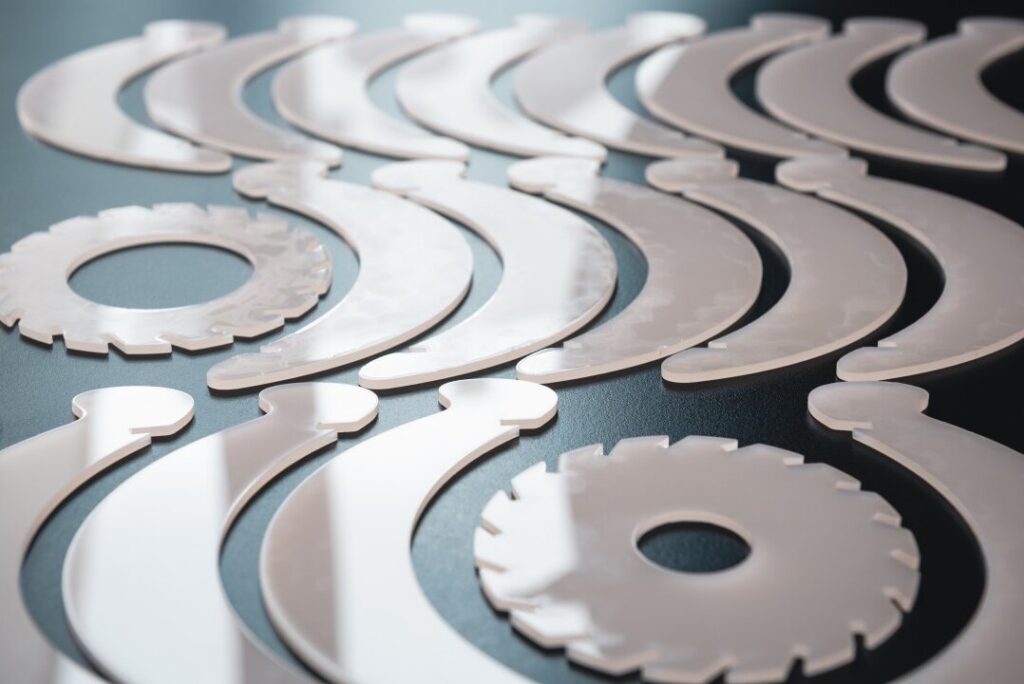
اختيار المعدات المناسبة
يعد اختيار معدات القطع بالليزر المناسبة أمرًا بالغ الأهمية لتحقيق أفضل النتائج باستخدام الأكريليك. دعنا نستكشف العوامل الرئيسية التي يجب أخذها في الاعتبار، وأفضل الماكينات المناسبة للعمل، ونصائح الصيانة الأساسية.
عوامل يجب مراعاتها عند اختيار آلة القطع بالليزر
يُعد خرج الطاقة جانبًا مهمًا عند اختيار ماكينة قطع بالليزر للأكريليك. الماكينات ذات القوة الكهربائية الأعلى تقطع أسرع وتتعامل مع المواد الأكثر سمكًا. بالنسبة لمعظم مشاريع الأكريليك، يكفي ليزر ثاني أكسيد الكربون بقدرة 40-80 واط لمعظم مشاريع الأكريليك.
حجم السرير مهم أيضاً. ضع في اعتبارك أبعاد مشاريعك النموذجية. يسمح السرير الأكبر حجماً بالمزيد من القطع الكبيرة أو القطع المتعددة في جلسة واحدة.
تسير السرعة والدقة جنبًا إلى جنب. ابحث عن الماكينات المزودة بمحركات متدرجة عالية الجودة وأنظمة قوية للتحكم في الحركة. تضمن هذه الميزات إجراء عمليات قطع نظيفة ودقيقة حتى في التصميمات المعقدة.
غالباً ما يتم التغاضي عن توافق البرمجيات ولكن لا ينبغي إغفاله. تعمل البرامج سهلة الاستخدام على تبسيط سير عملك. تحقق مما إذا كان الجهاز يعمل مع برامج التصميم الشائعة مثل CorelDRAW أو Adobe Illustrator.
أفضل ماكينات القطع بالليزر للأكريليك
تتميز Epilog Zing 24 بموثوقيتها وسهولة استخدامها. فهي مثالية للمشاريع الصغيرة والمتوسطة الحجم وتوفر إمكانات نقش ممتازة.
بالنسبة للعمليات الكبيرة الحجم، يصعب التغلب على ماكينة Trotec Speedy 400. معالجتها عالية السرعة وحجم سريرها الكبير يجعلها مثالية لقطع الأكريليك التجاري.
توفر الماكينة Universal VLS6.60 توازنًا رائعًا بين الميزات والسعر. فهي تتعامل مع مواد مختلفة بخلاف الأكريليك، مما يجعلها متعددة الاستخدامات للمشاريع المتنوعة.
نصائح لصيانة آلات القطع بالليزر
التنظيف المنتظم أمر حيوي للحفاظ على ماكينة القطع بالليزر. امسح العدسة والمرايا يوميًا لمنع التراكم الذي يؤثر على جودة القطع.
يجب إجراء فحوصات المحاذاة أسبوعيًا. تضمن محاذاة الليزر بشكل ملائم القطع المتسق عبر منطقة العمل بأكملها.
استبدل مرشحات الهواء شهرياً أو حسب الحاجة. تحمي الفلاتر النظيفة كلاً من الماكينة ومساحة العمل من الأبخرة الضارة والمخلفات.
قم بتشحيم الأجزاء المتحركة وفقًا لجدول الشركة المصنعة. تمنع هذه الخطوة البسيطة البلى والتلف، مما يطيل من عمر الماكينة.
حافظ على برودة أنبوب الليزر الخاص بك. يمكن أن يسبب ارتفاع درجة الحرارة العديد من المشاكل. تأكد من أن نظام التبريد يعمل بشكل صحيح، واستبدل سائل التبريد على النحو الموصى به.
عملية قطع الأكريليك بالليزر: خطوة بخطوة
يُعد إتقان عملية القطع بالليزر أمرًا حيويًا لتحقيق نتائج احترافية باستخدام الأكريليك. لنتعرف على كل مرحلة، بدءاً من الإعداد وحتى اللمسات النهائية.
إعداد آلة القطع بالليزر
أولاً، قم أولاً بتشغيل الماكينة واتركها تسخن. يضمن ذلك أداءً مستقراً طوال جلسة القطع.
تحقق من محاذاة الليزر. استخدم وظيفة اختبار إطلاق النار للتحقق من أن الليزر يصطدم بمركز منطقة القطع.
نظف العدسة والمرايا. حتى الحطام الصغير يمكن أن يؤثر على جودة القطع، لذا فإن المسح السريع أمر بالغ الأهمية.
تأكد من وجود تهوية مناسبة. ينتج عن قطع الأكريليك أبخرة، لذا تأكد من أن نظام العادم يعمل بشكل صحيح.
تحميل الأكريليك وتحديد موضعه
قم بإزالة الطبقة الواقية من لوح الأكريليك. تمنع هذه الخطوة ذوبان الطبقة الواقية أثناء التقطيع.
ضع الأكريليك على سرير القطع. بالنسبة لمعظم المشاريع، ضعه في الزاوية العلوية اليسرى لسهولة الرجوع إليه.
استخدم أداة الضبط البؤري للماكينة لضبط البُعد البؤري الصحيح. يضمن البُعد البؤري الصحيح إجراء عمليات قطع نظيفة ودقيقة.
ثبّت الأكريليك بأوزان أو شريط لاصق إذا لزم الأمر. هذا يمنع التحول أثناء عملية القطع.
ضبط الإعدادات للحصول على أفضل النتائج
اضبط طاقة الليزر بناءً على سُمك الأكريليك. ابدأ بتوصيات الشركة المصنعة واضبطها حسب الحاجة.
حدد سرعة القطع المناسبة. ينتج عن السرعات الأبطأ عمليات قطع أنظف ولكنها تستغرق وقتاً أطول.
اضبط عدد التمريرات إذا لزم الأمر. قد يحتاج الأكريليك السميك إلى عدة تمريرات للقطع الكامل.
قم بضبط إعدادات مساعد الهواء. يساعد تدفق الهواء المناسب على منع الاحتراق وتحسين جودة الحافة.
تقنيات التشطيب بعد القطع
قم بإزالة القطع المقطوعة بعناية. قد يكون الأكريليك هشاً، لذا تعامل معه بحذر لتجنب الكسر.
انزع أي طبقة واقية متبقية. يكشف ذلك عن النقاء واللمعان الكامل لقطع الأكريليك الخاصة بك.
صنفرة الحواف إذا لزم الأمر. استخدم ورق صنفرة ناعم الحبيبات لتنعيم أي بقع خشنة خلفها الليزر.
تلميع حواف مقصوصة للحصول على لمسة نهائية فائقة النقاء. يعمل التلميع السريع باللهب أو مركب التلميع الأكريليكي على تحقيق المعجزات.
نظّف قطعك النهائية. تُستخدم قطعة قماش من الألياف الدقيقة ومنظف أكريليك متخصص لإزالة أي بقايا أو بصمات أصابع.
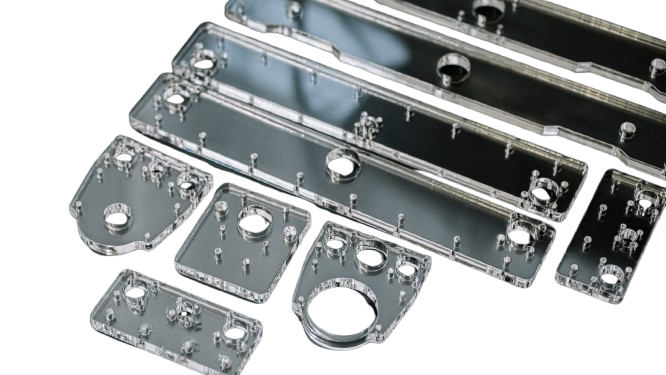
قطع الأكريليك بالليزر :استكشاف المشكلات الشائعة وحلها
حتى مع الإعداد الدقيق، يمكن أن تنشأ مشاكل أثناء القطع بالليزر. دعنا نتناول بعض المشاكل المتكررة وحلولها لإبقاء مشاريع الأكريليك الخاصة بك على المسار الصحيح.
التخفيضات غير المكتملة
عمليات القطع غير المكتملة محبطة ولكن غالباً ما يكون من السهل إصلاحها. أولاً، تحقق من إعدادات الطاقة. لن يقطع الليزر بالكامل إذا كانت منخفضة للغاية بالنسبة لسمك الأكريليك.
السرعة هي السبب الآخر. يمكن أن يؤدي القطع بسرعة كبيرة إلى قطع جزئي. حاول إبطاء سرعة القطع للحصول على نتائج أكثر دقة.
يمكن أن تتسبب مشاكل التركيز في حدوث قطع غير مكتمل. تأكد من تركيز الليزر بشكل صحيح على سطح الأكريليك. حتى الاختلالات الطفيفة يمكن أن تؤثر على عمق القطع.
قد تكون التمريرات المتعددة ضرورية للأكريليك السميك. إذا لم تنجح التمريرات المنفردة في قطعه، فقم ببرمجة ماكينتك لتمريرتين أو أكثر.
نظف العدسات والمرايا. يمكن أن يقلل الحطام من طاقة الليزر، مما يؤدي إلى قطع غير مكتمل. غالبًا ما يحل التنظيف المنتظم هذه المشكلة.
الذوبان والأبخرة
غالبًا ما ينتج الذوبان المفرط عن الحرارة الزائدة. لتقليل تراكم الحرارة، قلل من طاقة الليزر أو قم بزيادة سرعة القطع.
تلعب التهوية دوراً رئيسياً. تحقق من أن نظام العادم يعمل بكامل طاقته. يمكن أن تؤدي التهوية السيئة إلى تراكم الأبخرة وتؤثر على جودة القطع.
يمكن أن تساعد فواصل التبريد بين القطع. بالنسبة للمشاريع الكبيرة، توقف من حين لآخر حتى يبرد الأكريليك.
مشاكل اختلال المحاذاة
ابدأ بفحص ملفك. تأكّد من محاذاة جميع العناصر بشكل صحيح في برنامج التصميم الخاص بك قبل إرسالها إلى آلة القطع بالليزر.
قم بتأمين المواد بشكل صحيح. يمكن أن يتحرك الأكريليك السائب أثناء القطع، مما يسبب اختلالاً في المحاذاة. استخدم أوزان أو شريط لاصق لتثبيتها في مكانها.
تحقق من معايرة الماكينة. يمكن أن يؤدي الاستخدام المنتظم إلى إبطال المحاذاة. اتبع إجراءات معايرة الماكينة لضمان الدقة.
افحص بحثاً عن أحزمة أو تروس مفكوكة. يمكن أن تتسبب المشكلات الميكانيكية في اختلال المحاذاة. افحص المكونات وأحكم ربطها حسب الحاجة.
ضع في اعتبارك العوامل البيئية. يمكن أن تؤثر الاهتزازات الصادرة من المعدات القريبة على الدقة. اعزل قاطع الليزر الخاص بك إن أمكن.
خاتمة
تتقدم التكنولوجيا بسرعة، ولكن يظل قطع الأكريليك بالليزر بالليزر خيارًا موثوقًا به للتصنيع عالي الجودة. إن الجمع بين الدقة والسرعة ومرونة التصميم يجعلها مثالية لاحتياجات الإنتاج الحديثة. تستفيد مشاريعك من القطع النظيف وسرعة الإنجاز والنتائج الاحترافية.
ابدأ بقطع اختبار صغيرة لتتعلم العملية. خذ وقتك في ضبط الإعدادات وفهم سلوك المواد. يأتي النجاح في القطع بالليزر الأكريليكي من الخبرة العملية والاهتمام بالتفاصيل.
هل تحتاج إلى مصنع موثوق لأجزاء الصفائح المعدنية؟ شنغن هو المكان المناسب للذهاب. نحن متخصصون في قطع الصفائح المعدنية بالليزر، والثني، وتشطيب الأسطح، والتصنيع باستخدام الحاسب الآلي. تواصل مع شنغن اليوم وطلب المساعدة من المتخصصين!
الأسئلة الشائعة
ما الفرق بين زجاج الأكريليك وزجاج شبكي؟
يشير الأكريليك وزجاج شبكي إلى نفس المادة - بلاستيك PMMA. إنهما اسمان تجاريان مختلفان لمنتج متطابق. كلاهما يقطع بشكل متساوٍ بالليزر.
هل يمكنك قص الأكريليك الملون بالليزر؟
الأكريليك الملون يعمل بشكل ممتاز مع القطع بالليزر. لا تؤثر الأصباغ على عملية القطع. قد تحتاج الألوان الداكنة إلى إعدادات طاقة مختلفة قليلاً عن الألواح الشفافة.
ما مدى سماكة الأكريليك الذي يمكن لقاطع الليزر قطعه بالليزر؟
تتعامل معظم أجهزة ليزر ثاني أكسيد الكربون مع الأكريليك الذي يصل سمكه إلى 1/2 بوصة في تمريرة واحدة. تحتاج المواد الأكثر سمكًا إلى عدة تمريرات. تحقق دائمًا من مواصفات ماكينتك أولاً.
ما هي التكاليف المرتبطة بقطع الأكريليك بالليزر؟
يختلف السعر حسب حجم المشروع ومدى تعقيده. توقع $1-5 لكل دقيقة من وقت القطع، بالإضافة إلى تكاليف المواد. الطلبات بالجملة تقلل بشكل كبير من تكاليف القطعة الواحدة.
مهلا، أنا كيفن لي

على مدى السنوات العشر الماضية، كنت منغمسًا في أشكال مختلفة من تصنيع الصفائح المعدنية، وشاركت رؤى رائعة هنا من تجاربي عبر ورش العمل المتنوعة.
ابقى على تواصل

كيفن لي
لدي أكثر من عشر سنوات من الخبرة المهنية في تصنيع الصفائح المعدنية، وتخصصت في القطع بالليزر، والثني، واللحام، وتقنيات معالجة الأسطح. كمدير فني في شنغن، أنا ملتزم بحل تحديات التصنيع المعقدة ودفع الابتكار والجودة في كل مشروع.


